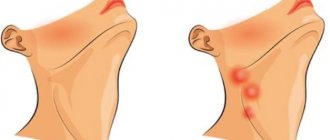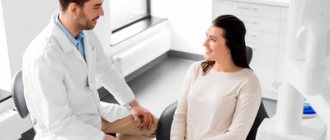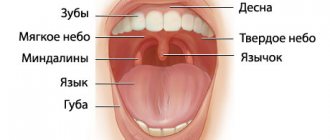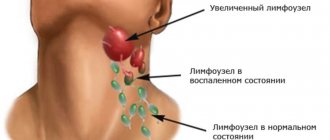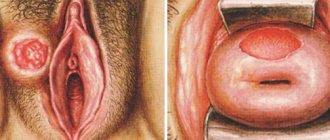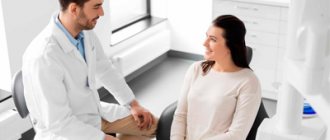Every third appeal to an oncologist on social networks or on remote consultation portals is formulated something like this: “save, help, I have enlarged lymph nodes.”
As a rule, young people write, usually from 18 to 25 years old, and I don’t remember a case when it eventually turned out that the situation required treatment from an oncologist. Most often, enlarged lymph nodes were caused by a sore tooth, sore throat, conjunctivitis, and so on.
It is clear that fear and fears for one’s health in such cases force one to immediately run to an oncologist.
However, is everything so simple, and is it worth rolling your eyes about any treatment with an enlarged lymph node?
My personal statistics show: if a person comes for a face-to-face consultation, he is already one of those few whose situation was not limited to the banal “it got sick and went away.”
Let's take a closer look at how the lymphatic system works and understand the nature of enlarged lymph nodes.
Fact #2
Lymphatic vessels are not something abstract.
It is worth crossing or ligating them, for example, during surgery on the axillary lymph nodes for breast cancer, and lymphostasis is likely to develop - swelling of the limb, which, again, most likely will not go away.
The most visible to us from the point of view of examination - the so-called peripheral lymph nodes (in the neck, supraclavicular, axillary and inguinal) can increase, and this is in most cases a manifestation of reactive lymphadenopathy - an inflammatory reaction indicating the fight against infection.
Child's age
Lymph nodes are usually not identified/palpated in newborn babies due to their small size and soft consistency.
In young children, cervical, axillary and inguinal lymph nodes can be identified.
In children under 5 years of age, during a routine examination by a pediatrician, palpable lymph nodes are detected in 44% of cases, in children with any diseases - in 64% of cases [2].
The presence of palpable lymph nodes is not always a manifestation of any pathology. And also palpable formations may not be lymph nodes at all, but, for example, a congenital anomaly (cyst, hygroma).
Normally, lymph nodes in children grow until 8-12 years of age, then decrease slightly [3].
Fact #3
Most often, the cervical and submandibular lymph nodes become inflamed, because in the facial part of the skull there are many open mucous membranes and associated infections.
A sore throat, carious or rotten teeth, and ear and eye bacterial and viral infections are the most common causes of cervical lymphadenopathy. The axillary and inguinal nodes react according to the same principle.
Therefore, if a lymph node is bothering you, first of all you need to go to a therapist, dentist, or ENT doctor.
If the genesis of lymphadenopathy is unclear, the doctor will prescribe an ultrasound, and during this study, attention will be directed mainly not to the size of the lymph node, but to its shape and differentiation of the structure.
- Gallery
- Reviews
- Articles
- Licenses
- Vacancies
- Insurance partners
- Partners
- Controlling organizations
- Schedule for receiving citizens for personal requests
- Online consultation with a doctor
- Documentation
Lymphadenopathy is an increase in size, as well as a change in the shape of one or an entire group of lymph nodes of various origins, without signs of inflammation.
A person has about 600 lymph nodes. Normal sizes are up to 1 cm. The cervical, axillary, inguinal, and intra-abdominal lymph nodes are more often enlarged. Playing a protective role, lymph nodes are among the first to stand in the way of the spread of infections and other foreign antigens (allergens, tumor cells, etc.).
Until a child reaches 12 years of age, the lymphatic system is considered immature, although its formation begins in the early prenatal period. This explains the high incidence of lymphadenopathy among pediatric patients.
Among the causes of enlarged lymph nodes, infectious diseases occupy first place, then systemic diseases of connective tissue, and blood diseases.
Fortunately, lymphadenopathy of a specific tumor nature in children makes up no more than 10% of the total morbidity. A malignant form of the tumor process, which predominates in childhood, is lymphosarcoma. Rarely, enlarged lymph nodes in children occur with severe allergic reactions and helminthic infestations. You need to know that the use of a long course of certain antibiotics and antifungal drugs can provoke the development of a generalized form of lymphadenopathy, the signs of which gradually disappear after discontinuation of the drugs.
Infectious causes of enlarged lymph nodes are varied - these are:
- viruses;
- bacteria;
- fungi;
- parasites.
Infectious diseases that most often occur with enlarged lymph nodes:
- viral (Epstein Barr virus, cytomegalovirus, other herpetic viruses, measles, rubella, viral hepatitis, HIV);
- parasitic (toxoplasmosis, etc.);
- chlamydial infection;
- mycoplasma infection;
- fungal diseases (scarlet fever, diphtheria, tick-borne borreliosis, listeriosis, yersiniosis, etc.);
- mycobacterial (tuberculosis).
If an infectious cause of enlarged lymph nodes is suspected, an epidemiological history is important:
- contact with domestic animals (for example, cats);
- eating undercooked meat, raw water;
- going out into nature;
- swimming in ponds;
- visiting exotic countries.
If lymph nodes are enlarged, you should contact the following specialists:
- infectious disease specialist;
- hematologist;
- surgeon;
- oncologist (if necessary).
Services and prices
Primary appointment (examination, consultation) with an infectious disease specialist
2,200 rub.
Repeated appointment (examination, consultation) with an infectious disease specialist
2,100 rub.
Primary appointment (examination, consultation) with a pediatric surgeon
2,200 rub.
Repeated appointment (examination, consultation) with a pediatric surgeon
2,100 rub.
Ultrasound examination of lymph nodes
1,300 rub.
Isaev Andrey Aleksandrovich Head of Department, pediatric surgeon Doctor of the highest category Work experience: 43 years
Make an appointment
Fact #5
Lymph nodes enlarge during cancer because cancer cells enter the lymphatic vessels draining a certain area, which then settle in the “filters” (lymph nodes) in the form of metastases and begin to grow there.
Such lymph nodes do not shrink after treatment of infectious diseases, but only increase, merging with other lymph nodes into conglomerates, extending beyond the lymph node and fixing it in the surrounding tissues. Such lymph nodes are rarely painful, they are dense, very dense.
Often in cancer, lymph nodes are affected by a “chain” that is clearly visible on palpation. With lymphomas, conglomerates are often visible from the outside. Of course, with such manifestations you need to go to an oncologist and hematologist.
For suspicious nodes, a biopsy will be performed in the absence of other causes. This is either a puncture with a needle and collection of material, or an operation to completely remove the lymph node for histological examination.
Localization of lymph nodes
When lymph nodes are enlarged, it is important to determine the cause/source of the changes. Palpation of inguinal or axillary lymph nodes is unlikely to be associated with the disease, cervical - possibly supraclavicular - probably (further assessment and differential diagnosis are required) [2].
Often, enlargement of the supraclavicular lymph nodes on the right is associated with a tumor or infection of the mediastinum, and on the left – with metastases of an abdominal tumor. When palpating the supraclavicular lymph nodes, an additional examination is recommended - CT or MRI of the chest [5]. Read more in the article “Management of lymphadenopathy in children.”
Consistency of lymph nodes
Dense lymph nodes, especially if accompanied by redness, increased local temperature, fluctuation, are often detected in infectious diseases.
Dense lymph nodes and without redness are often detected in viral infections and systemic diseases [5].
Dense, hard, immobile lymph nodes are a finding in malignant diseases.
Normally, the lymph nodes are soft, elastic, mobile (easily displaced upon palpation).
Consolidation of the lymph nodes may be associated with fibrosis or hemorrhage into it, immobility and cohesion are possible with the germination of metastases, or inflammation of surrounding tissues (tuberculosis, sarcoidosis).
Enlargement of lymph nodes can be generalized (enlargement or change in 2 or more unrelated groups of lymph nodes). Often generalized lymphadenopathy is accompanied by an enlarged liver and spleen, and a rash may be present. Generalized lymphadenopathy is not always a sign of serious pathology [5].
Localized lymphadenopathy is often found in children (palpation of the cervical, less often inguinal lymph nodes).
Most often, lymphadenopathy is localized and affects the nodes of the neck and head (3:1) [7].
In most cases, lymphadenopathy resolves on its own or after adequate treatment [5]. If lymphadenopathy does not resolve within 3–4 weeks, it is advisable to consider additional testing [5].
Diagnostic methods
The main task of diagnosis for enlarged lymph nodes is to identify the real cause among many possible ones. An initial examination and history taking are ineffective here; the doctor can only confirm the presence of changes in the superficial nodes. Therefore, the patient needs to undergo a detailed examination.
Table. Diagnostic methods for enlarged lymph nodes
| Type of study | What does it show |
| Blood analysis | The level of red blood cells, lymphocytes, ESR, as well as the presence/absence of viral and bacterial infections are determined. |
| Provides a three-dimensional image of the affected area, which allows you to clarify the size of deep lymph nodes, identify neoplasms, and also determine whether there are pathologies of the spine. |
| Gives a more accurate result compared to fluoroscopy. Layer-by-layer images help to identify the slightest structural changes both in the lymph nodes themselves and in adjacent tissues and the spinal column. |
| Allows you to determine the location of lymph nodes, their size, number, structure. |
In some cases, when these studies do not reveal the exact cause, the patient undergoes a lymph node biopsy.
Why are they increasing?
There are many causes of inflammation of the lymph nodes, of which there are about fifty in the human body. These are common colds, infectious and viral diseases, mononucleosis, injuries, side effects of medications and vaccinations, arthritis, tuberculosis, and oncology.
Not last on the general list are allergic diseases. There are only two ways to determine what exactly caused such a reaction - by taking tests for allergens or by eliminating certain foods one by one from the diet (as well as removing pets, indoor plants, carpets, etc.).
Location of lymph nodes
Lymph nodes are small (0.5-5 5 mm) formations consisting of connective tissue and serve to cleanse the lymph of various toxins, metabolic products and pathogens that penetrate the blood. There are more than 600 of them in the human body, and they are located in groups along the lymphatic vessels in the most important areas of the body:
- in the area of the neck and lower jaw;
- in the center of the chest;
- in the axillary region;
- in the groin area;
- near the elbows;
- in the abdominal cavity;
- under the knees.
Human lymphatic system and location of lymph nodes on the body
Depending on the depth of their location, lymph nodes are divided into deep and superficial. The former are found in the deep layers of connective and muscle tissue, the latter in the subcutaneous layer. Superficial nodes in the normal state are not visually noticeable, but can be easily felt by palpation, while deep ones can only be seen with hardware examination, for example, on an X-ray or MRI.
Superficial lymph nodes, when enlarged, noticeably appear under the skin
The lymph nodes closest to the spine are located in the chest cavity; they are called mediastinal lymph nodes and are deep. Also quite close to the spinal column (its lower part) are the lymph nodes of the peritoneum and groin. But they are all located in the front, but on the back there are no such formations, neither superficial nor deep. Therefore, if a ball-shaped or small lump is felt under the skin of the back, it is most likely a wen or a cyst of the sebaceous glands, and not an inflamed lymph node.
Bumps on the back
